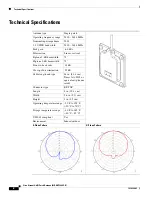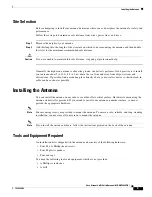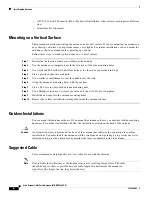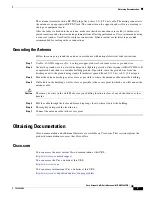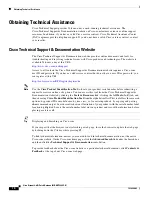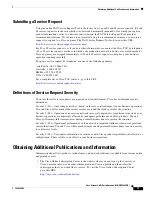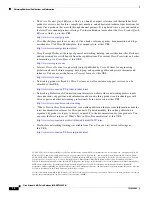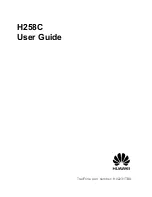
4
Cisco Aironet 6-dBi Patch Antenna (AIR-ANT2460P-R)
78-16940-02
Installation Guidelines
3.
Call your electric power company. Tell them your plans and ask them to come look at your proposed
installation. This is a small inconvenience considering your life is at stake.
4.
Plan your installation carefully and completely before you begin. Successful raising of a mast or
tower is largely a matter of coordination. Each person should be assigned to a specific task, and
should know what to do and when to do it. One person should be in charge of the operation to issue
instructions and watch for signs of trouble.
5.
When installing your antenna, remember:
a.
Do not
use a metal ladder.
b.
Do not
work on a wet or windy day.
c.
Do
dress properly—shoes with rubber soles and heels, rubber gloves, long sleeved shirt or
jacket.
6.
If the assembly starts to drop, get away from it and let it fall. Remember, the antenna, mast, cable,
and metal guy wires are all excellent conductors of electrical current. Even the slightest touch of any
of these parts to a power line complete an electrical path through the antenna and the installer:
you!
7.
If any part of the antenna system should come in contact with a power line,
don’t touch it or try to
remove it yourself. Call your local power company
. They will remove it safely.
8.
If an accident should occur with the power lines call for qualified emergency help immediately.
Installation Guidelines
Because the antenna transmits and receives radio signals, they are susceptible to RF obstructions and
common sources of interference that can reduce throughput and range of the device to which they are
connected. Follow these guidelines to ensure the best possible performance:
•
Mount the antenna to utilize its propagation characteristics. One way to do this is to orient the
antenna vertically and mount it as high as possible.
•
Keep the antenna away from metal obstructions such as heating and air-conditioning ducts, large
ceiling trusses, building superstructures, and major power cabling runs. If necessary, use a rigid
conduit to lower the antenna away from these obstructions.
•
The density of the materials used in a building’s construction determines the number of walls the
signal must pass through and still maintain adequate coverage. Consider the following before
choosing the location to install your antenna:
–
Paper and vinyl walls have very little affect on signal penetration.
–
Solid and pre-cast concrete walls limit signal penetration to one or two walls without degrading
coverage.
–
Concrete and wood block walls limit signal penetration to three or four walls.
–
A signal can penetrate five or six walls constructed of drywall or wood.
–
A thick metal wall causes signals to reflect off, causing poor penetration.
–
A chain link fence or wire mesh spaced between 1 and 1 1/2 in. (2.5 and 3.8 cm) acts as a
harmonic reflector that blocks a 2.4-Ghz radio signal.
•
Install the antenna away from microwave ovens and 2-GHz cordless phones. These products can
cause signal interference because they operate in the same frequency range as the device your
antenna is connected to.
•
Install the antenna in a
vertical orientation to maximize signal propagation.


